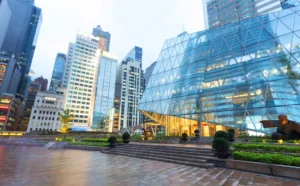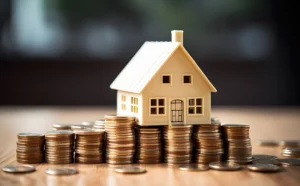The last half of the decade has been one of intense tumult, with geopolitical disturbances, volatile market dynamics, and global economic headwinds. Amidst this economic upheaval, the Indian real estate sector has not only managed to persevere but has progressed manyfold. With industry reports predicting a growth rate of 9.2% during 2023-2028, the sector’s strong momentum is expected to contribute significantly to the country’s economic progress.
Particularly, the residential real estate segment has witnessed massive growth, with the country’s housing sales reaching an all-time high in 2022. More than 3.65 lakh residential units were sold across seven major cities in the country in 2022 as compared to the last peak in 2014 when 3.43 lakh units were sold.
This increase in housing demand and supply has been a cumulative product of numerous factors. India’s rising commercial sector with increasing national and foreign investment, a favourable economic outlook, encouraging government initiatives, and rising income levels have led to fostering of a fertile residential real estate sector.
To further understand the future of the residential real estate market, we will briefly discuss some trends which will be seen in the sector in 2003:
- Rising desire to be a homeowner:
The year 2023 will witness a generational shift in home owning market with many first-time buyers gearing up to purchase residential real estate. This shift has occurred due to numerous reasons. The pandemic has led to a systematic change in how the modern workforce works and lives.With work-from-home and hybrid work models increasingly becoming the norm, it has stirred up a desire to own spacious houses providing comfortable working environments.
Owning your living space provides a sense of security and stability, an attribute that is very high in demand after the tumultuous pandemic years. In addition to this, the increasing parity between rental prices and residential units’ EMI has led to a further augmentation in demand for residential housing. - Tier 2 cities emergimg as a desirable locale for residential spaces:
The modern workforce prefers to either work near their homes or participate in a hybrid or work-from-home model. This has led to an increasing number of workers moving to tier-2 and tier-3 cities which can provide them with residential spaces at a relatively low purchase price. The fact that now these cities are emerging as thriving business centres with a myriad of employment opportunities and a strong social infrastructure, has served to further heighten the demand for residential spaces in the region.
- Augmenting demand for holistic spaces:
The pandemic has maneuvered a substantial shift in consumer preferences when it comes to residential assets. Now more than ever people are realising how well-endowed living spaces can notably elevate living experiences. In the contemporary residential sector therefore there has been an increase in demand for spaces with amenable urban amenities. Further, the pandemic has also led to increase in demand for open, spacious residential spaces .
Today consumers wants living spaces that have a plethora of urban converniences and top-class amenities within the premises of the residency. A focus on facilities such as yoga centres, gymansiums and other wellness avenues is the order of the day to ensure the residents have all they need to lead a healthy and productive life. - Escalating NRI investment:
Additionally industry pundits suggest that with India being among the top 10 price-appreciating housing markets intenationally, and with the global economy being on a downswing, more NRIs than ever today are looking to invest in a safe and secure living environment for their families in their home country. The residential real estate sector has proven to be a feasible option for these investors as they are not looking for immediate returns. Further, in today’s capricious market, these residential spaces are a unicorn, low-risk investment as compared to other relatively tempestous, financial assets. These individuals with high disposable income, therefore, tend to invest in the housing segment in India not only for an exclusive living experience but also as a high-yield, relatively secure investment.
- Safe and sustainable environ:
Homeowners and investors today are cognizant ofir own responsibility to indulge in environmentally sustainable practices in their daily lives and expect their living spaces to reflect these values. Consequently, there is predicted to be an increase in realties proactively striving to adhere to ESG reposnbilities with housing spaces cropping up which are not only opulent with world-class amenities but are simultaneously environmentally conscious.
Tathastu: A residency emblematic of the changing market dynamics
The visionary Ganga Realty with their latest project, Tathastu has provided us with the ideal answer to the modern buyers requirement for residential spaces, located strategically in the heart of the bustling district of Sohna. With the residency surrounded by a robust social infrastructure consisting of preeminent educational institutions, leading medical facilities ,and numerous recreation avenues, the community provides an ideal locale for the ever-so-busy modern buyer.
The round-the-clock CCTV surveillance and 24*7 patrols by professionally trained security personnel ensure you have a safe space to create resplendent memories with your family. Not only that, Ganga has employed numerous measures such as installing rainwater harvesting systems and other energy-efficient technology to lower the carbon footprint of the community. Wreathed in verdant green spaces expanding over 120 acres, with landscaped gardens and relaxing wellness centres dotting the residence, it provides its residents with a tranquil haven they can call home.








